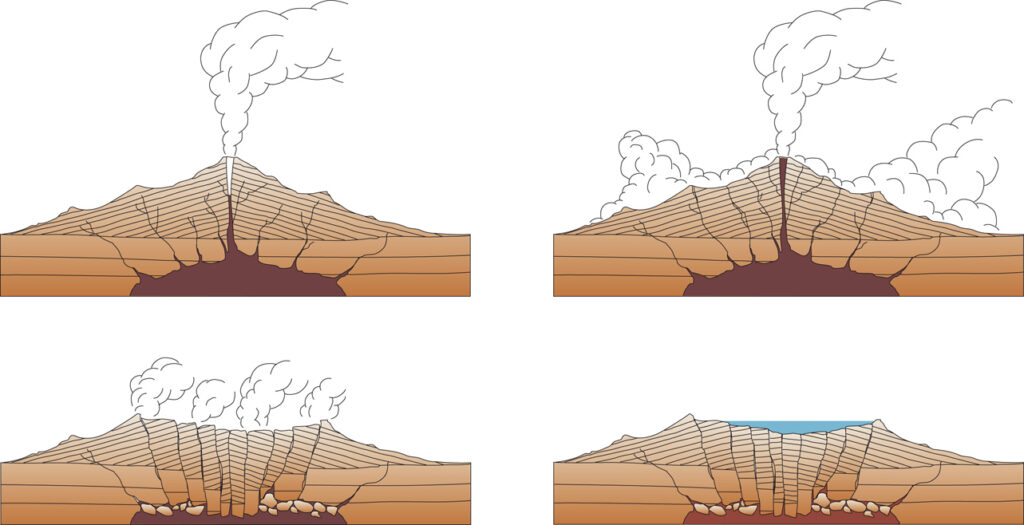In volcanology the caldera is a wide basin or depression, often occupied by a circular or elliptical lake formed by the accumulation of rainwater, created after the sinking of the magma chamber of a volcanic structure, caused by its partial emptying following a massive eruption.
The formation of a caldera happens after part of a volcanic structure sinks inside the magma chamber, after it empties the magma within.
What causes the volcano to collapse is the emptying of the magma chamber, which, due to the decreased pressure after the eruption, can no longer support the entire volcanic structure.
In later eras, when the volcano is active again, it begins to rebuild the volcanic structure inside the caldera.
The term caldera is often confused with that of crater, which, in the strictest sense, is the circular depression a few hundred metres in diameter, at the top of a volcanic cone. There are also rare cases of calderas of non-volcanic origin created by erosive events only.
Usually calderas have a diameter of a few kilometres but there are some very large ones, of yet unclear origin, which have diameters of tens of kilometres. These are called supervolcanoes.